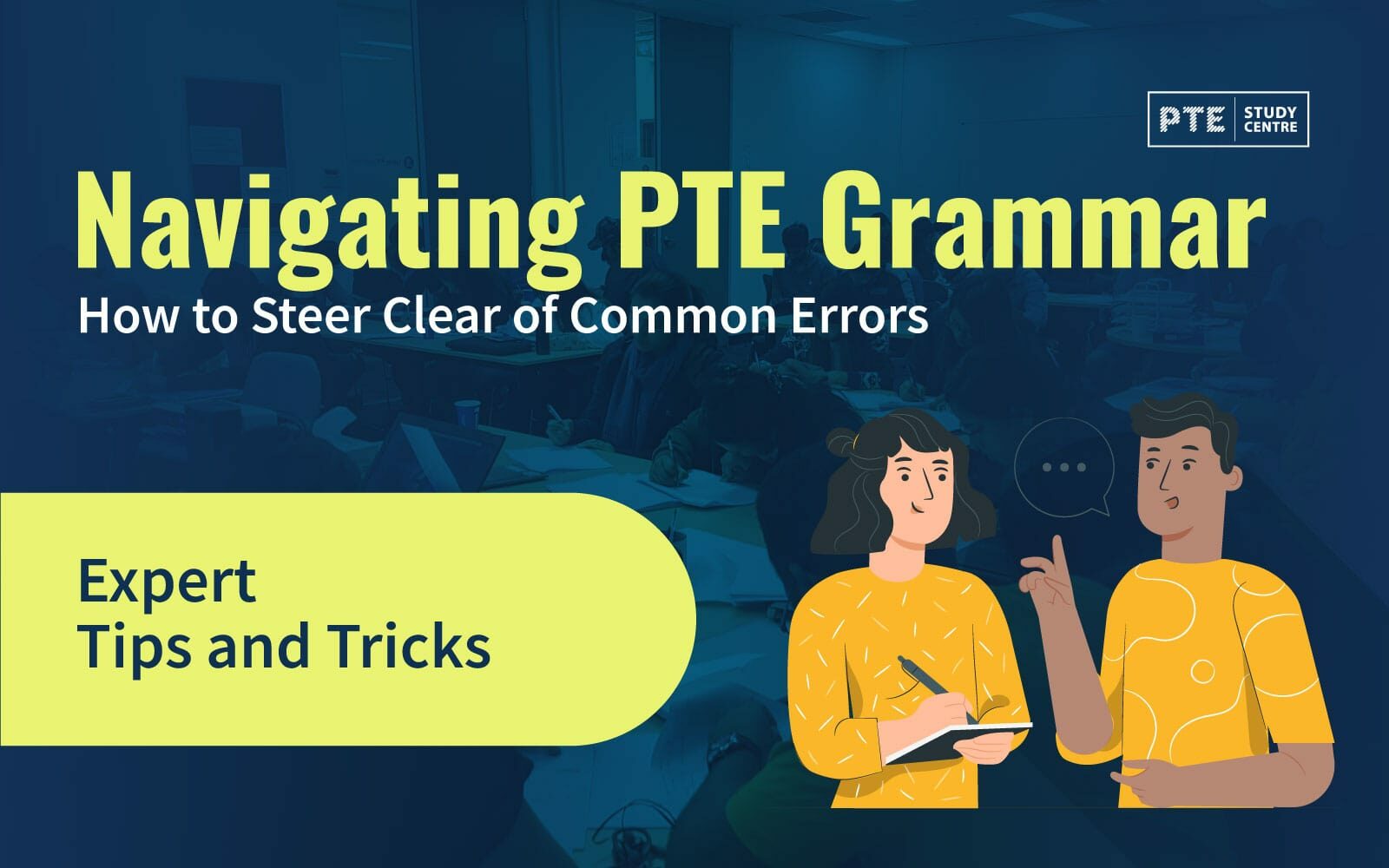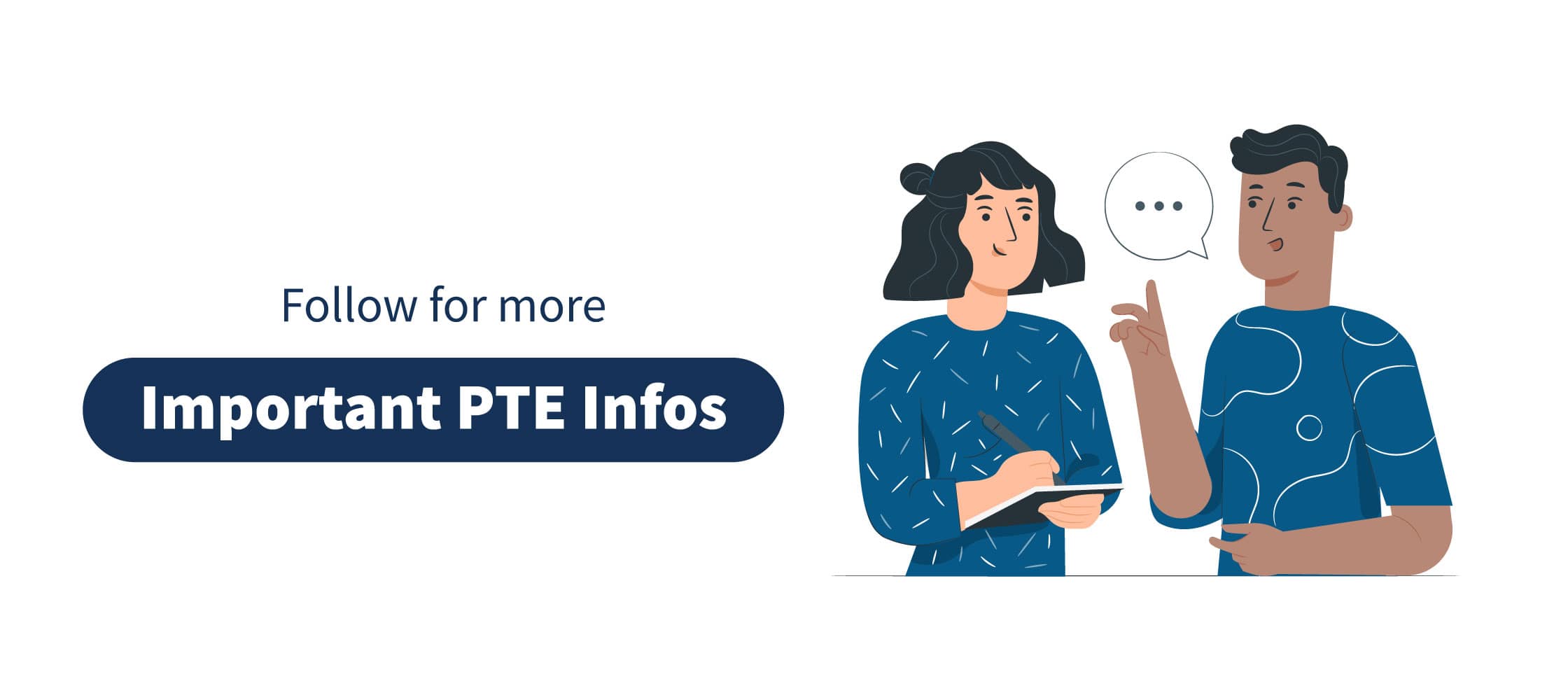If you’ve been looking to improve your PTE score, mastering grammar is a must as most of the time, common grammatical errors lead to low scores. For that, we’ll delve into some common grammar errors students make in the PTE and provide valuable tips on how to steer clear of them in this article so that you can achieve a high score in the PTE exam.
- Subject-Verb Agreement: One of the most prevalent grammar errors in the PTE is subject-verb agreement. It occurs when the subject and verb in a sentence don’t match in number. For instance, saying “The team are playing” instead of “The team is playing” is incorrect. To avoid this, always ensure that your subject and verb agree in number.
- Run-On Sentences and Fragments: Run-on sentences and sentence fragments can adversely affect your writing and speaking scores. A run-on sentence is when two independent clauses are joined without proper punctuation. On the other hand, fragments are incomplete sentences. To avoid these errors, focus on using appropriate punctuation and ensuring that every sentence is a complete thought.
- Misplaced and Dangling Modifiers: Misplaced modifiers occur when descriptive words or phrases are not correctly placed in relation to the word they are describing. Dangling modifiers are similar but lack a clear subject to describe. For example, “Running quickly, the book was finished” should be corrected to “The book was finished quickly by running.” Always place modifiers near the words they are modifying.
- Verb Tense Consistency: In both written and spoken responses, maintaining consistent verb tenses is vital. Shifting between past, present, and future tenses can confuse your audience. Stick to one tense unless there’s a clear reason to switch.
- Word Form Errors: Word form errors involve using incorrect forms of words, such as using a noun form when a verb is required or vice versa. Practice sentence structure and word forms to reduce these errors.
- Articles and Prepositions: Commonly confused articles like ‘a’ and ‘an,’ and prepositions like ‘in,’ ‘on,’ and ‘at’ can lead to errors in sentence structure. Pay close attention to their usage in context.
- Singular/Plural Nouns and Pronouns: Ensure that your pronouns match the nouns they refer to in both number and gender. Misusing “they,” “he,” or “she” in relation to a singular noun can lead to confusion.
- Sentence Structure and Complexity: While trying to showcase your language skills, avoid overly complex sentence structures that may lead to errors. Keep sentences clear and concise.
- Lack of Parallelism: Parallel structure is essential in writing. When listing items or actions, ensure that they follow a consistent grammatical structure. For example, “I like swimming, hiking, and to camp” should be corrected to “I like swimming, hiking, and camping.”
- Pronoun Reference Errors: Be cautious with pronoun references to avoid ambiguity. Ensure that it’s clear what the pronoun refers to in the sentence.
- Practice Regularly: The more you practice, the more familiar you become with common grammar rules and errors.
- Seek Feedback: Review your written and spoken responses, and consider seeking feedback from teachers or peers.
- Grammar Resources: Utilize grammar textbooks, online resources, and grammar-checking tools.
- Grammar Exercises: Complete grammar exercises to reinforce your understanding.
- Grammarly Tools: Consider using grammar-checking tools like Grammarly to identify and correct errors.
In conclusion, mastering grammar is crucial for excelling in the PTE exam. By identifying common errors and implementing these tips, you can significantly improve your language proficiency and boost your chances of success. Be sure to follow us for more important updates regarding the PTE exam.





